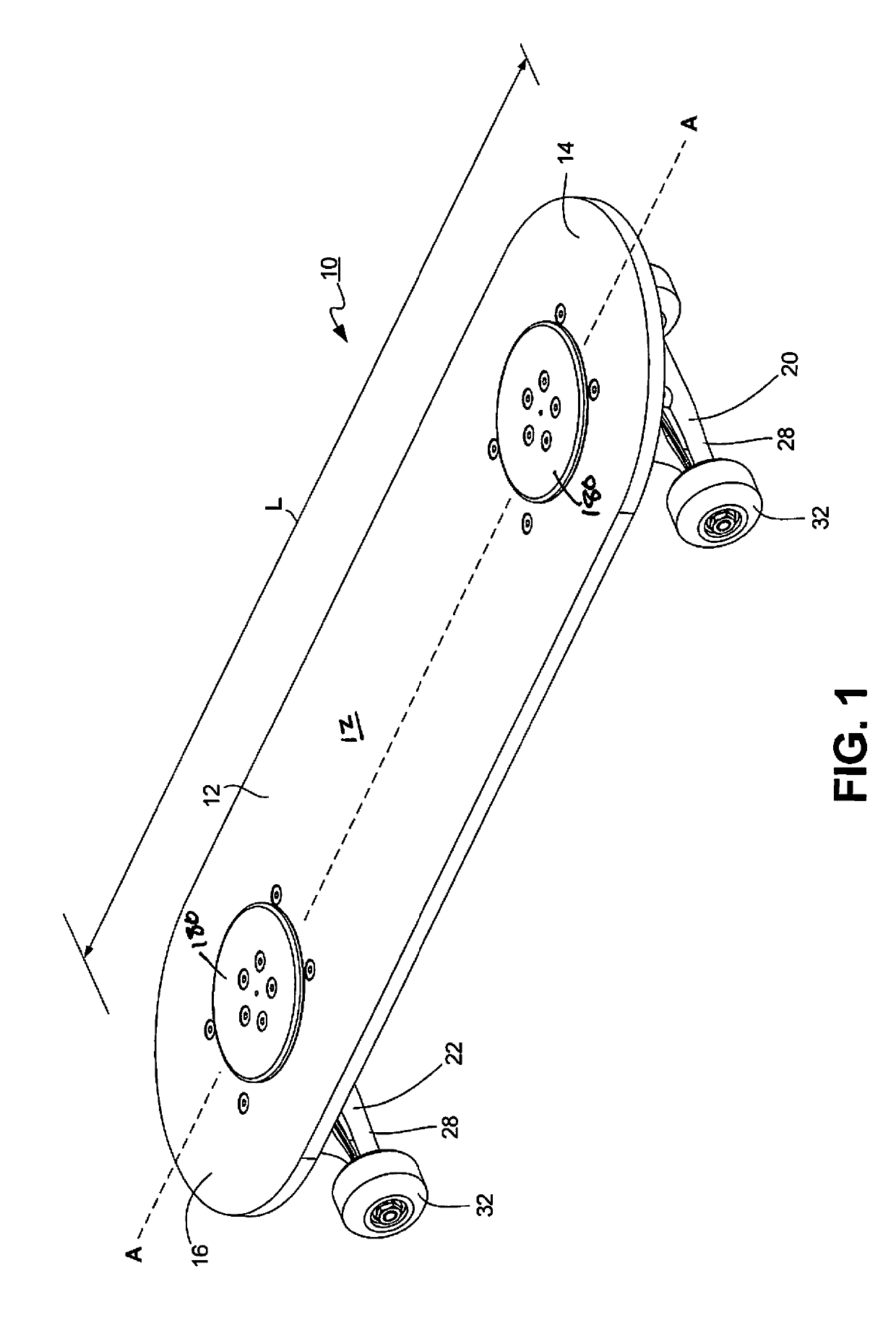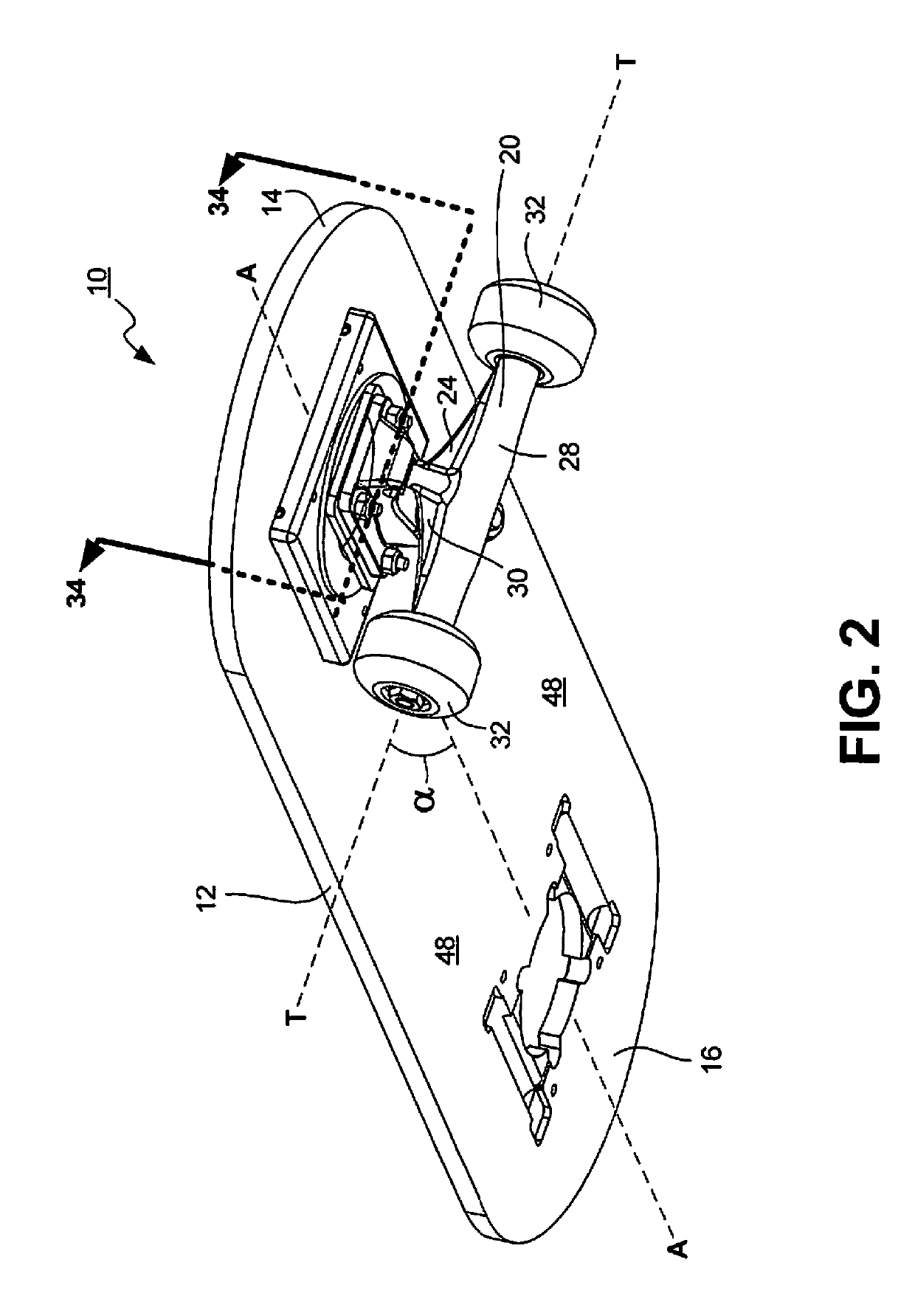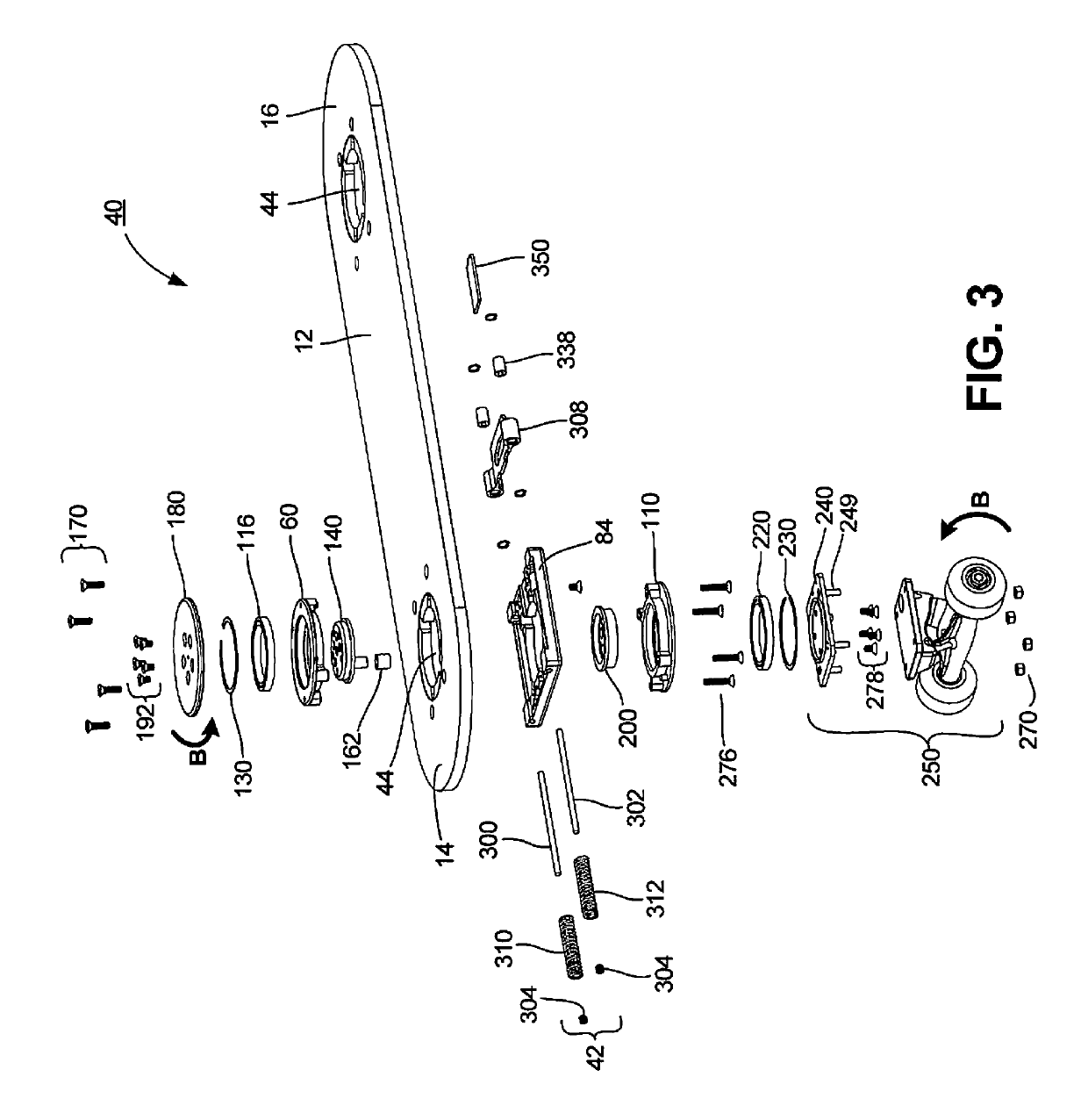Roller board with one or more user-maneuverable trucks and north-seeking return mechanism
a technology of roller boards and return mechanisms, which is applied in the field of self-propelled roller boards, can solve the problems of affecting the maneuverability of the device, the device requires more balance and coordination than many users can muster, and the steering shaft can interfere with the maneuverability of the aerial trick
- Summary
- Abstract
- Description
- Claims
- Application Information
AI Technical Summary
Benefits of technology
Problems solved by technology
Method used
Image
Examples
embodiment 530
[0152]In an alternative embodiment 530 depicted in FIG. 44, an adjustable nut 532 may be used in lieu of spacer 520. This threaded nut 532 bears helical threads 534 along its inner surface. These threads cooperate with helical threads 536 formed along the exterior surface of piston rod 300, 302. The bearing face 538 of nut 532 will act to apply a preload upon compression spring 310, 312 in a similar manner to the spacer 520 embodiment of FIG. 43. However, the position of the nut 532 is adjustable along piston rod 300, 302 to allow the user to increase or decrease the preload force applied upon the compression spring 310, 312 in its standby condition. This adjustable nut 532 eliminates the need for a number of spacers 520 of different lengths L. It also eliminates the need for the user to disassemble north-seeking return mechanism 42 to insert spacer 520, or swap out a spacer of a different length L to adjust the preload three applied to the compression spring 310, 312.
[0153]Dependin...
embodiment 540
[0160]An alternative embodiment 540 of the “deck” is shown in FIG. 46 comprising a tubular structure. A small front deck 542 and rear deck 544 are connected to each other by means of longitudinal tubes 546 and 548. The front deck 542 and rear deck 544 each comprise an opening 550 and 552, respectively that is similar to openings 44 formed in deck 12 (see FIG. 3), and accommodate the upper bearing housing 60 and crank shaft 140 described above for the rotatable foot pad 180. The front deck 542 and rear deck 544 also comprise the plurality of threaded holes 554 around the perimeter of openings 550 and 552 for receiving the bolts used to attach the housing 84 for the north-seeking, return mechanism 42, as described above. Such a tubular structure for the skateboard “deck”540 made from steel or other metal can be cheaper to manufacture than conventional decks 12 made from fiberglass or other composite plastic materials. At the same time, a metal structure exhibits the necessary strength...
embodiment 650
[0176]FIGS. 51-52 show an alternative embodiment 650. The same upper bearing housing 60, bearing 116, crankshaft 140, crankshaft receptor 200, bearing 116, and lower bearing housing as shown in FIG. 39 are used to operably connect the handle bar post 466 to the front wheel assembly 652. But, an adaptor plate 654 is bolted onto deck 12. Universal joint 656 has an upper post 658 and a lower post 660 pivoting with respect to each other within a vertical plane by means of linkage pin 662. The lower post of the universal joint 656 is attached to the crankshaft 140. Meanwhile, upper post 658 of the universal joint 656 is inserted into the hollow bottom of handle bar post 466. Housing 666 has body portion 668 attached to flange portion 670. The flange portion 670 is bolted to deck 12. Body portion 668 surrounds handle bar post 466 to provide structural support to the post. Handle bar post 466 is raked towards the rear end of the scooter deck 12 by means of the universal joint 658 and housi...
PUM
 Login to View More
Login to View More Abstract
Description
Claims
Application Information
 Login to View More
Login to View More - R&D
- Intellectual Property
- Life Sciences
- Materials
- Tech Scout
- Unparalleled Data Quality
- Higher Quality Content
- 60% Fewer Hallucinations
Browse by: Latest US Patents, China's latest patents, Technical Efficacy Thesaurus, Application Domain, Technology Topic, Popular Technical Reports.
© 2025 PatSnap. All rights reserved.Legal|Privacy policy|Modern Slavery Act Transparency Statement|Sitemap|About US| Contact US: help@patsnap.com



